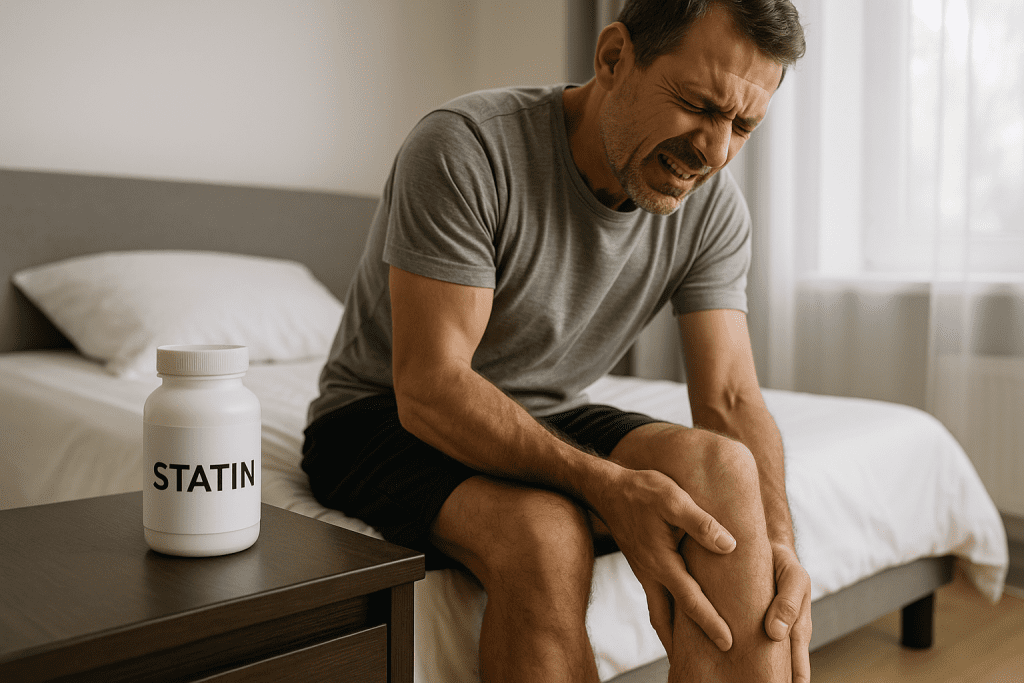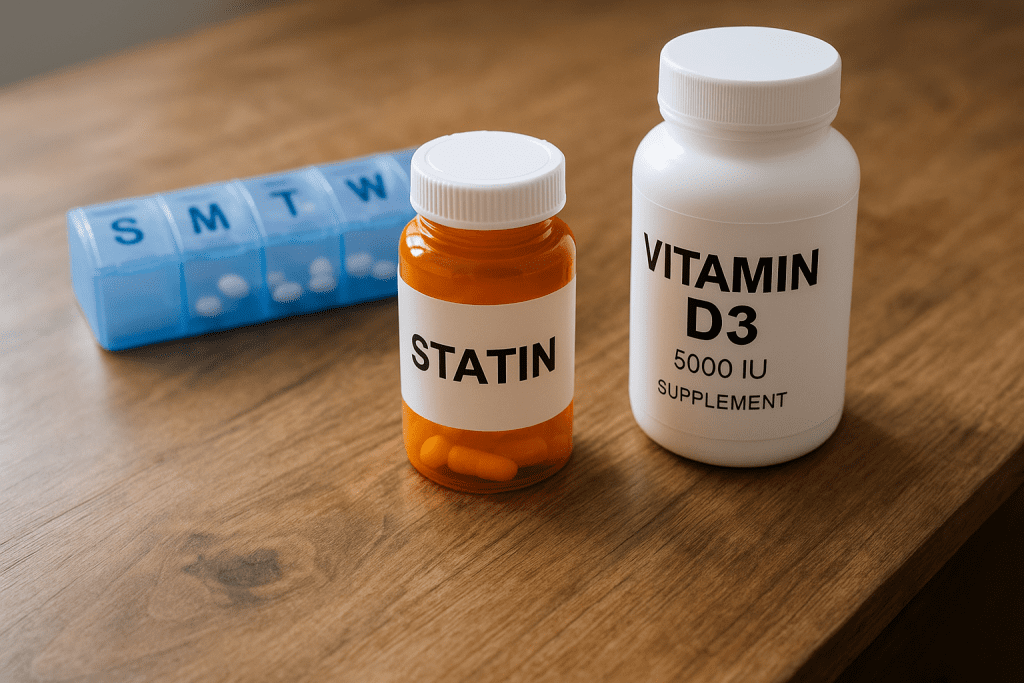Statins are widely used to lower cholesterol, but for many people, they come with an unwanted side effect: muscle pain. Known as statin-associated muscle symptoms (SAMS), this issue affects up to 29% of users and is a leading cause of discontinuation. Vitamin D has been proposed as a potential fix—but does it work?
This guide explores the science behind the vitamin D statin interaction, looks at clinical trials, and clarifies whether vitamin D supplementation truly helps relieve statin-induced myopathy.
Quick Answer: Can Vitamin D Reduce Statin-Related Muscle Pain?
| Question | Evidence-Based Answer |
|---|---|
| Does vitamin D prevent statin-related myopathy? | No, high-quality trials show no significant effect |
| Can it help those with low vitamin D levels? | Possibly—but not conclusively proven |
| Should I take vitamin D for muscle pain? | Only if you’re deficient or as part of broader care |
| Best strategies for SAMS? | Dose adjustments, switching statins, or alternate dosing |
- Observational studies showed possible benefits
- But the landmark VITAL trial found no effect of vitamin D on muscle pain or statin tolerance
- Vitamin D remains useful for general muscle health if you’re deficient
Why Muscle Pain Happens with Statins
Statin-induced myopathy ranges from mild aches to serious muscle damage. The exact cause is multifactorial:
- Statins may impair muscle repair mechanisms
- They may lower vitamin D levels via cholesterol metabolism pathways
- Some patients may have genetic factors (e.g., vitamin D receptor polymorphisms) that increase risk
Vitamin D is crucial for muscle function. A deficiency alone can cause fatigue, pain, or weakness—which makes the connection to SAMS biologically plausible.

The Case For Vitamin D: Observational Research
Several observational studies suggested a link between low vitamin D levels and muscle symptoms in statin users.
- A meta-analysis in PubMed showed patients with statin-related myopathy had vitamin D levels ~4 ng/mL lower on average
- Vitamin D supplementation improved statin tolerance to 89% in previously intolerant patients who were deficient
- Another prospective study showed that up to 95% of statin-intolerant patients were able to resume statins after correcting vitamin D levels
While promising, these studies are non-randomized and susceptible to placebo effects or selection bias.
The Case Against Vitamin D: High-Quality Clinical Trials
The most rigorous evidence comes from the VITAL trial, a large randomized, double-blind, placebo-controlled study with over 2,000 participants.
- Participants received 2,000 IU/day of vitamin D or placebo
- Over 4.8 years, 31% in both groups reported muscle pain
- Statin discontinuation rates were also identical (13%)
- Even participants with vitamin D deficiency saw no improvement in symptoms
These results were published in JAMA Cardiology and echoed by Stanford Health Policy, stating that vitamin D failed to impact muscle symptoms across all vitamin D levels.
How Do We Reconcile the Conflicting Data?
The contradiction between observational and randomized trials may stem from:
- Placebo effect in non-blinded studies
- Publication bias favoring positive outcomes
- Vitamin D correction helping those with severe deficiency, not the general population
In short: vitamin D may help some, but not most. It’s not a universal fix for SAMS.
What to Do If You Have Statin-Related Muscle Pain
While vitamin D isn’t a silver bullet, it still plays a role in a broader management strategy:
Evidence-Based Approaches
- Switch statins: Try lower-intensity statins or more hydrophilic ones
- Adjust dosage: Lower doses or alternate-day dosing can help
- Non-statin alternatives: PCSK9 inhibitors or ezetimibe may be used
- Check vitamin D: If deficient, supplement—but don’t expect dramatic results
For those managing multiple meds, see our guide to certified interaction-safe multivitamins for polypharmacy.
Best Practices for Supplementing Vitamin D
| Vitamin D Level (ng/mL) | Supplementation Guidance |
| <20 (deficient) | Supplement 1,000–2,000 IU daily |
| 20–30 (insufficient) | Maintain or supplement as needed |
| >30 (adequate) | No extra vitamin D likely necessary |
Always consult your doctor before starting or increasing vitamin D, especially if you’re on statins or other medications. Our app comparing supplement brands for purity can help ensure product quality.

Conclusion: Where We Stand on Vitamin D for SAMS
The vitamin D statin interaction is more complex than it seems. While early studies hinted at benefits for vitamin D and muscle pain, the VITAL trial made it clear: routine supplementation doesn’t prevent statin-related symptoms.
That said, vitamin D still plays a role in overall muscle and immune health. If you’re deficient, correcting it is worthwhile. Just don’t count on it as the primary fix for statin-induced myopathy. Focus instead on personalized, evidence-based strategies—and always loop in your healthcare provider.
If you or a loved one takes multiple medications, check out our guide to safe supplements for seniors on 5+ medications for more personalized support.

